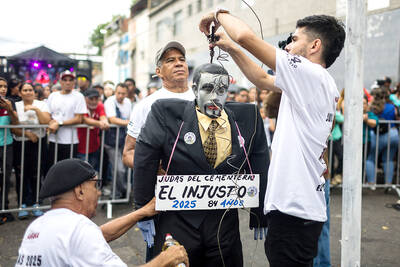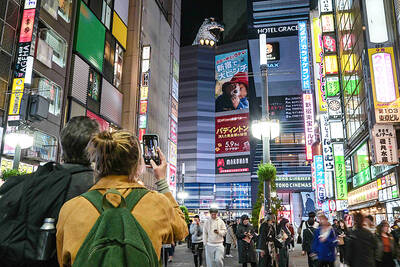India has decided to buy 126 fighter jets from France, taken delivery of a nuclear-powered submarine from Russia and prepared for its first aircraft carrier in recent weeks as it modernizes its military to match China’s.
Relations between India and China have been tense since a 1962 border war, and New Delhi has watched with dismay in recent years as Beijing has increased its influence in the Indian Ocean.
China has financed the development of ports in Pakistan, Sri Lanka, Bangladesh and Myanmar, and its recent effort to get access to the Seychelles prodded New Delhi to renew its own outreach to the island state off western India.
With its recent purchases running into tens of billions of US dollars, India is finally working to counter what it sees as aggressive incursions into a region it has long dominated.
“The Indian military is strengthening its forces in preparation to fight a limited conflict along the disputed border, and is working to balance Chinese power projection in the Indian Ocean,” US Director of National Intelligence James Clapper told a US Senate committee last week.
India has created new infantry mountain divisions and plans to raise a strike corps aimed at countering aggression by China. The border between the two countries has still not been set despite 15 rounds of talks, and patrols frequently face off on the ground.
Analysts say that although the probability of a conflict between the two is remote, a short, sharp conflict in the disputed Himalayan heights cannot be ruled out.
“Over the last couple of years, the Chinese have been acting more and more aggressively in the political, diplomatic and military arena,” said retired Brigadier Gurmeet Kanwal, director of the Indian army-funded Centre for Land -Warfare Studies in New Delhi.
Indian leaders and defense strategists have fretted as China has modernized its forces and extended its military advantage over India. For some in New Delhi, countering China is taking precedence even over checking longtime rival Pakistan.
The drive to modernize Indian forces was long overdue as much of the equipment was obsolete Soviet-era weapons, and the orders for fighter jets, naval frigates, helicopters and armaments have made India the world’s largest importer of arms. The Stockholm International Peace Research Institute said India accounted for 9 percent of global weapons imports in 2010, the latest year for which figures are available.
The order of 126 combat aircraft, won by France’s Dassault, followed a bitter battle by global jet manufacturers. The initial cost for the fighter jets is estimated as US$11 billion, but on-board weaponry, technology transfers, maintenance, warranties and other costs are expected to almost double the price.
The Indian Navy last week took command of a Russian Nerpa nuclear submarine, renamed INS Chakra-II, at the Russian port of Vladivostok, propelling India into an elite group of countries operating underwater nuclear-powered vessels. It joins the US, France, Russia, Britain and China.
The Chakra-II, on lease for 10 years at a cost of nearly US$1 billion, is expected to be inducted into the navy by next month. Later this year, India is expected to take delivery of a retrofitted Soviet-built aircraft carrier.
In addition, six Scorpene subs being built in India under license from France in a US$5 billion deal are expected to start going into service in 2015, three years behind schedule, Indian Defense Minister A.K. Antony said.
Some Indian military experts complain that the country is not doing enough to upgrade its forces to the level befitting the regional power it aspires to be.
“It is not only China that is rising. India is on the ascent too, and it is a trend that will continue for some decades,” retired Air Vice Marshal Kapil Kak at the Centre for Air Power Studies in New Delhi said.
India may be worrying over -China’s overtures to its neighbors, but New Delhi is also reaching out to the Southeast Asian and East Asian countries in Beijing’s backyard.
India has struck a strategic partnership with Vietnam, including helping Hanoi beef up its defense capabilities.
Nowhere is the contest between China and India more evident than in Myanmar, where both are caught in a race to gain access to the country’s natural gas sources.
India has raised two mountain divisions of soldiers to add to its existing high-altitude troops. About 36,000 soldiers and officers from the divisions have been posted in the remote northeast, not far from India’s Arunachal Pradesh State, which China claims as part of its territory.
A proposal for a mountain strike corps is awaiting clearance by India’s Cabinet, and an independent armored brigade for the mountain region also is in the works. India hopes to show it can strike deep beyond its neighbor’s borders to serve as a deterrent for any Chinese aggression, Kanwal said.
“India is building up its capability for offensive operations in the mountains with a view to taking the fight into Chinese territory,” he added.

POLITICAL PRISONERS VS DEPORTEES: Venezuela’s prosecutor’s office slammed the call by El Salvador’s leader, accusing him of crimes against humanity Salvadoran President Nayib Bukele on Sunday proposed carrying out a prisoner swap with Venezuela, suggesting he would exchange Venezuelan deportees from the US his government has kept imprisoned for what he called “political prisoners” in Venezuela. In a post on X, directed at Venezuelan President Nicolas Maduro, Bukele listed off a number of family members of high-level opposition figures in Venezuela, journalists and activists detained during the South American government’s electoral crackdown last year. “The only reason they are imprisoned is for having opposed you and your electoral fraud,” he wrote to Maduro. “However, I want to propose a humanitarian agreement that

ECONOMIC WORRIES: The ruling PAP faces voters amid concerns that the city-state faces the possibility of a recession and job losses amid Washington’s tariffs Singapore yesterday finalized contestants for its general election on Saturday next week, with the ruling People’s Action Party (PAP) fielding 32 new candidates in the biggest refresh of the party that has ruled the city-state since independence in 1965. The move follows a pledge by Singaporean Prime Minister Lawrence Wong (黃循財), who took office last year and assumed the PAP leadership, to “bring in new blood, new ideas and new energy” to steer the country of 6 million people. His latest shake-up beats that of predecessors Lee Hsien Loong (李顯龍) and Goh Chok Tong (吳作棟), who replaced 24 and 11 politicians respectively

Young women standing idly around a park in Tokyo’s west suggest that a giant statue of Godzilla is not the only attraction for a record number of foreign tourists. Their faces lit by the cold glow of their phones, the women lining Okubo Park are evidence that sex tourism has developed as a dark flipside to the bustling Kabukicho nightlife district. Increasing numbers of foreign men are flocking to the area after seeing videos on social media. One of the women said that the area near Kabukicho, where Godzilla rumbles and belches smoke atop a cinema, has become a “real

‘WATER WARFARE’: A Pakistani official called India’s suspension of a 65-year-old treaty on the sharing of waters from the Indus River ‘a cowardly, illegal move’ Pakistan yesterday canceled visas for Indian nationals, closed its airspace for all Indian-owned or operated airlines, and suspended all trade with India, including to and from any third country. The retaliatory measures follow India’s decision to suspend visas for Pakistani nationals in the aftermath of a deadly attack by shooters in Kashmir that killed 26 people, mostly tourists. The rare attack on civilians shocked and outraged India and prompted calls for action against their country’s archenemy, Pakistan. New Delhi did not publicly produce evidence connecting the attack to its neighbor, but said it had “cross-border” links to Pakistan. Pakistan denied any connection to